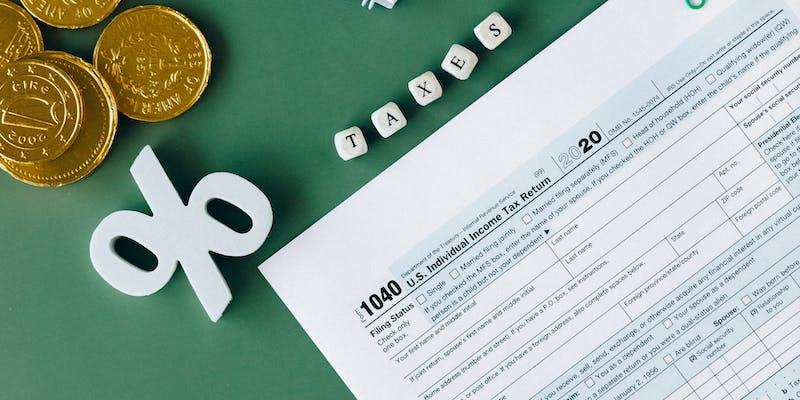IRS Form 1040EZ was a streamlined version of the standard IRS Form 1040. Designed for simplicity, it catered to individuals with straightforward tax scenarios, enabling a quick and straightforward method of filing income taxes. However, this form was phased out after the 2017 tax year, making way for the revamped Form 1040.
Who Could Use Form 1040EZ?
Eligibility criteria for Form 1040EZ were specific. Individuals using this form needed a taxable income below $100,000, earned less than $1,500 from interest, and did not claim any dependents. Additional qualifications and Form 1040 instructions included:
- Age Limit: Users and their spouses, if filing together, needed to be under 65 years old by the end of the tax year.
- Vision: Neither the filer nor their spouse could be legally blind at the close of the tax year.
- Deductions and Income Restrictions: The form did not allow for deductions such as student loan interest, educator expenses, tuition fees, or itemized deductions. Those receiving interest income were also subject to specific conditions regarding their income sources and reporting.
- Limited Tax Credits: Credits related to retirement savings, healthcare coverage, and education were not permissible.
- No Advance Earned Income Credit: Filers could not have received advance payments of the earned income credit (EIC), although claiming EIC during filing was allowed.
- Bankruptcy Limitation: Those involved in Chapter 11 bankruptcy proceedings post-October 16, 2005, were excluded.
- No Advanced Premium Tax Credit: The form was unsuitable for those receiving advanced payments for the premium tax credit for Marketplace health coverage plans.
- No Household Employee Taxes: Users must not owe taxes on wages paid to household employees.
For many, the 1040EZ served as an introduction to tax filing. Take, for instance, a high school student with a part-time job. If their income fell within the specified range, the 1040EZ would likely be their most convenient and suitable option for filing taxes.
Challenges and Replacement of Form 1040EZ
Due to its inherent limitations, the IRS discontinued Form 1040EZ, opting instead for a more adaptable approach with the standard Form 1040. The 1040EZ's restrictive nature led to its replacement, as it could not accommodate various tax situations and preferences.
Key Limitations of Form 1040EZ
- Income Restrictions: The form was only suitable for individuals with specific types of income and below a certain threshold. It excluded those with income sources like foreign earnings or those filing Form 1040 from abroad. Also, it wasn't an option for taxpayers wanting to claim dependents.
- Lack of Deduction Options: The simplicity of Form 1040EZ meant it didn't allow for itemized deductions or specific deductions like student loan interest or IRA contributions.
- Health Coverage Reporting: Users of Form 1040EZ had to report their health coverage separately, as the form didn't include this provision.
Form 1040EZ vs. Form 1040

While Form 1040EZ offered limited credits and deductions, such as the Earned Income Credit (EIC) and nontaxable combat pay, it was significantly less detailed than Form 1040.
- Form Complexity: The standard Form 1040 featured approximately 80% more lines than the 1040EZ, accommodating a wider range of financial situations.
- Dependent Information: A key difference was that Form 1040 allowed for the inclusion of dependents, which the 1040EZ did not.
- Income Categories: The EZ version was limited to income from wages, tips, taxable scholarships, the Alaska Permanent Fund, and unemployment compensation. In contrast, Form 1040 had over 16 income categories, including dividends, retirement distributions, and rental revenue.
- Deductions and Credits: Form 1040 allowed for a diverse range of deductions, covering areas from educational expenses to health savings contributions, providing a more comprehensive tax filing Form 1040 option for varied financial scenarios.
Shifting Away from Form 1040EZ to a Redesigned Form 1040
In 2018, the IRS marked a significant shift in its approach to tax filing by phasing out Forms 1040A and 1040EZ, introducing a redesigned Form 1040 in their place. This updated Form 1040 was designed to be more versatile, incorporating six new numbered schedules alongside the existing ones like Schedule A. The redesign aimed to simplify the process for many taxpayers, allowing them only to file the basic Form 1040, while others with more complex tax situations could add additional forms as necessary.
The development of this new form was a collaborative effort involving key stakeholders in the tax preparation and software industries. The IRS emphasized its partnership with these sectors to ensure the transition to the new form would be smooth, and taxpayers would continue receiving reliable support from tax professionals and tax software solutions. This collaboration was particularly focused on accommodating the changes and reforms affecting tax filings for 2018, highlighting the IRS's commitment to evolving with the needs of taxpayers and the changing landscape of tax legislation.
Expanding Taxpayer Access with the Redesigned Form 1040

User-Friendly Design for Diverse Tax Situations
The redesigned Form 1040, introduced in 2018, brought a user-friendly approach to tax filing. The IRS aimed to cater to a broader range of taxpayers, from those with simple tax situations to others with more complex financial scenarios. The form's structure was rethought to make it more intuitive, reducing the confusion associated with tax filing. By streamlining the form, the IRS intended to make tax filing more accessible, especially for individuals who previously found the process daunting.
Enhanced Digital Integration
Recognizing the increasing reliance on digital solutions for tax preparation, the IRS focused on enhancing the compatibility of the new Form 1040 with various tax software. This move aimed to simplify the e-filing process, ensuring taxpayers using digital platforms could easily navigate the new form. The IRS's collaboration with tax software companies was crucial in ensuring that the transition to the new form was seamless for both paper filers and those opting for electronic filing.
Education and Outreach Efforts
Alongside the form redesign, the IRS initiated education and outreach efforts to inform the public about the new Form 1040 and its implications. This included providing resources and guides to help taxpayers understand the changes and how they might affect their tax filing process. The IRS also worked with community organizations and tax professionals to disseminate information and provide assistance, ensuring taxpayers were well-informed and prepared for the transition. These efforts were particularly important in reaching individuals who might not be tax-savvy or had limited access to digital resources.
Through these enhancements and initiatives, the IRS demonstrated its commitment to making tax filing more efficient and accessible for all taxpayers, adapting to the evolving public and digital age needs.




